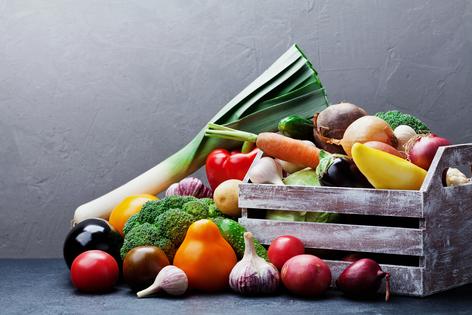Should you steam or boil vegetables?
Published in Health & Fitness
Vegetables are among the healthiest foods. Due to their concentration of protective plant compounds, fiber, vitamins, and minerals, vegetables have been linked to several benefits, from supporting healthy body weight to lowering the risk of common conditions like heart disease and certain cancers.
Eating vegetables is most important, but the way you cook vegetables also matters. Methods like boiling lead to the loss of water-soluble nutrients, while methods like steaming may result in higher concentrations of some vitamins and plant compounds.
Steaming may preserve nutrients
Steaming is a cooking method that uses hot steam from simmering or boiling water to cook food. When you continuously boil water, the water vaporizes into steam. The steam then travels to the food above, transferring heat to the food and cooking it.
There are many ways to steam food, but steamer baskets, which are perforated metal baskets that hold food above boiling water, are among the most popular methods. Steaming doesn’t involve submerging food in water, so fewer nutrients are lost.
Boiling vegetables causes their water-soluble nutrients, such as vitamin C, to leach into the water while cooking, resulting in lower nutrient levels. Studies show that vegetables cooked by steaming have higher levels of some vitamins and plant compounds, including vitamin C, beta-carotene, and flavonoid antioxidants, compared to boiling.
A recent study that analyzed the effects of steaming, boiling, and microwaving on various vegetables found that, except for carrots, the vegetables cooked with steam had a considerable rise in beta-carotene and retained the most flavonoid antioxidants.
How does boiling vegetables affect nutrition?
Boiling is associated with greater nutrient losses than steaming because it completely submerges vegetables in water. Water-soluble nutrients in the vegetables leach into the water, decreasing certain nutrients and phytochemicals like vitamin C and beta-carotene.
Taste considerations
Boiled vegetables are generally softer and more limp than steamed vegetables, which retain more crispness due to not being submerged in water. Steamed vegetables also tend to be more vibrant and retain more flavor than boiled vegetables.
Best steaming methods
Steaming is one of the best ways to retain the nutrition and flavor of your favorite vegetables, but it’s important not to over- or under-steam them.
Here are recommended steaming times for popular vegetables:
When steaming vegetables, you can check for tenderness using a fork or toothpick throughout the cooking process to ensure your vegetables come out just the way you like them.
Here are the steps to steam vegetables in a collapsible steamer basket:
1. Fill the bottom of a pot or saucepan with 1-2 inches (2.5-5.1 centimeters) of water.
2. Bring the water to a boil.
3. Place the steamer basket into the top of the saucepan or pot.
4. Fill the steamer basket with your prepared vegetables.
5. Cover the steamer basket with a lid and reduce the heat to medium.
6. Steam your food, checking it every few minutes until it’s cooked to your preference.
(Health delivers relevant information in clear, jargon-free language that puts health into context in peoples’ lives. Online at www.health.com.)
©2025 Dotdash Meredith. All rights reserved. Used with permission. Distributed by Tribune Content Agency, LLC.










Comments